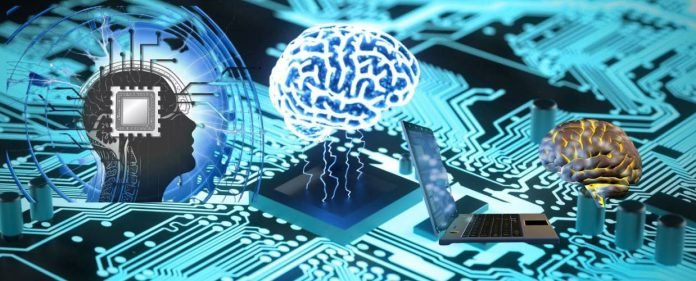In the rapidly evolving landscape of technology, the intersection of neuroscience and computing has given rise to a transformative innovation known as Brain-Computer Interfaces (BCIs). This comprehensive exploration delves into the intricate world of BCIs, tracing their origins, uncovering their diverse applications, discussing ethical implications, and envisioning their profound impact on humanity’s future.
Origins and Evolution of Brain-Computer Interfaces
The concept of interfacing the human brain with machines dates to the mid-20th century when researchers first began exploring ways to decode neural activity. However, in recent years, technological advancements brought BCIs from the realm of science fiction into reality. BCIs capitalize on the brain’s astonishing ability to generate electrical signals, translating these signals into actionable commands for external devices.
The development of BCIs has been a multi-disciplinary endeavor, drawing expertise from fields like neuroscience, engineering, and computer science. Early breakthroughs in understanding brain waves, particularly electroencephalography (EEG), paved the way for the first rudimentary brain-computer interfaces. Over time, these interfaces evolved from basic proof-of-concept experiments to sophisticated systems capable of translating complex neural patterns into meaningful actions.
Diverse Applications of Brain-Computer Interfaces
Brain-computer interfaces have ushered in a new era of possibilities, transforming numerous fields and enriching human experiences.
Medical Rehabilitation
One of the most profound applications of BCIs is in medical rehabilitation. Individuals with paralysis or motor disabilities can regain some level of control over their environment through neural interfaces. BCIs allow them to communicate, control prosthetic limbs, and regain a semblance of independence, drastically improving their quality of life. For instance, neuroprosthetics allows amputees to manipulate artificial limbs using their thoughts, effectively restoring lost motor functions.
Communication Augmentation
BCIs enable communication for individuals who are unable to use traditional methods due to conditions like locked-in syndrome or amyotrophic lateral sclerosis (ALS). By translating their brain signals into text or speech output, BCIs offer a lifeline of communication to those who would otherwise be isolated. This technology can give a voice to those silenced by neurological disorders, allowing them to express thoughts, emotions, and preferences.
Cognitive Enhancement
In the realm of cognitive enhancement, BCIs hold the potential to improve memory, attention, and learning. By modulating neural activity, these interfaces can boost cognitive functions and aid in tasks that require focus and mental clarity. For example, transcranial direct current stimulation (tDCS) delivers low electrical currents to the brain to enhance learning capabilities or mitigate cognitive decline associated with aging.
Gaming and Entertainment
BCIs are poised to revolutionize the gaming and entertainment industries. Gamers can control characters or objects using their thoughts, introducing a new level of immersion. Similarly, virtual reality experiences could become more intuitive and immersive as BCIs allow users to interact with virtual environments using their minds. The gaming industry has already witnessed prototypes of mind-controlled games that respond to players’ neural commands, opening new avenues for interactive entertainment.
Ethical Considerations and Future Possibilities
As BCIs push the boundaries of what is possible, they also raise complex ethical questions.
Privacy and Data Security
Interfacing with the human brain generates a wealth of personal data. Ensuring the privacy and security of this data is paramount, as unauthorized access could lead to the manipulation of thoughts and emotions. As BCIs become more integrated into daily life, safeguarding the integrity and confidentiality of neural information becomes essential to protect individuals’ mental privacy.
Informed Consent and Autonomy
As BCIs advance, the question of informed consent becomes crucial. Users must fully understand the implications, risks, and potential benefits of interfacing their minds with technology. Informed consent ensures that individuals retain autonomy over their bodies and minds, making informed decisions about engaging with brain-computer interfaces.
Enhancement vs. Disability
The use of BCIs for cognitive enhancement could lead to a divide between those who can afford such enhancements and those who cannot. Ethical considerations arise when BCIs are used to restore function and enhance capabilities beyond normal human limits. Striking a balance between using BCIs to address disabilities and avoiding the potential exacerbation of social inequalities is a critical ethical challenge.
Neuroethical Guidelines
The development of comprehensive neuroethical guidelines is essential to ensure that BCIs are developed and used responsibly. These guidelines would address issues such as consent, data ownership, and the potential misuse of neurotechnology. Establishing a robust framework of ethics and regulations is crucial to prevent unethical uses of BCIs and to promote equitable access to these technologies.
Conclusion: A New Frontier in Human-Machine Interaction
Brain-computer interfaces represent a convergence of scientific curiosity, technological innovation, and the boundless potential of the human mind. Their emergence marks a new chapter in human-machine interaction as they bridge the gap between the realms of biology and technology.
As research and development continue, BCIs promise to revolutionize healthcare, communication, education, and entertainment. Yet, with such transformative power comes an obligation to approach these technologies with a blend of wonder and caution, ensuring that ethical considerations and responsible development guide their evolution. As we stand at the crossroads of neurobiology and computing, the journey ahead promises to unlock new dimensions of human potential and deepen our understanding of the intricate workings of the human brain. The collaboration between human cognition and computational capabilities holds the key to a future where minds and machines coalesce to create a more interconnected, empathetic, and empowered world.



